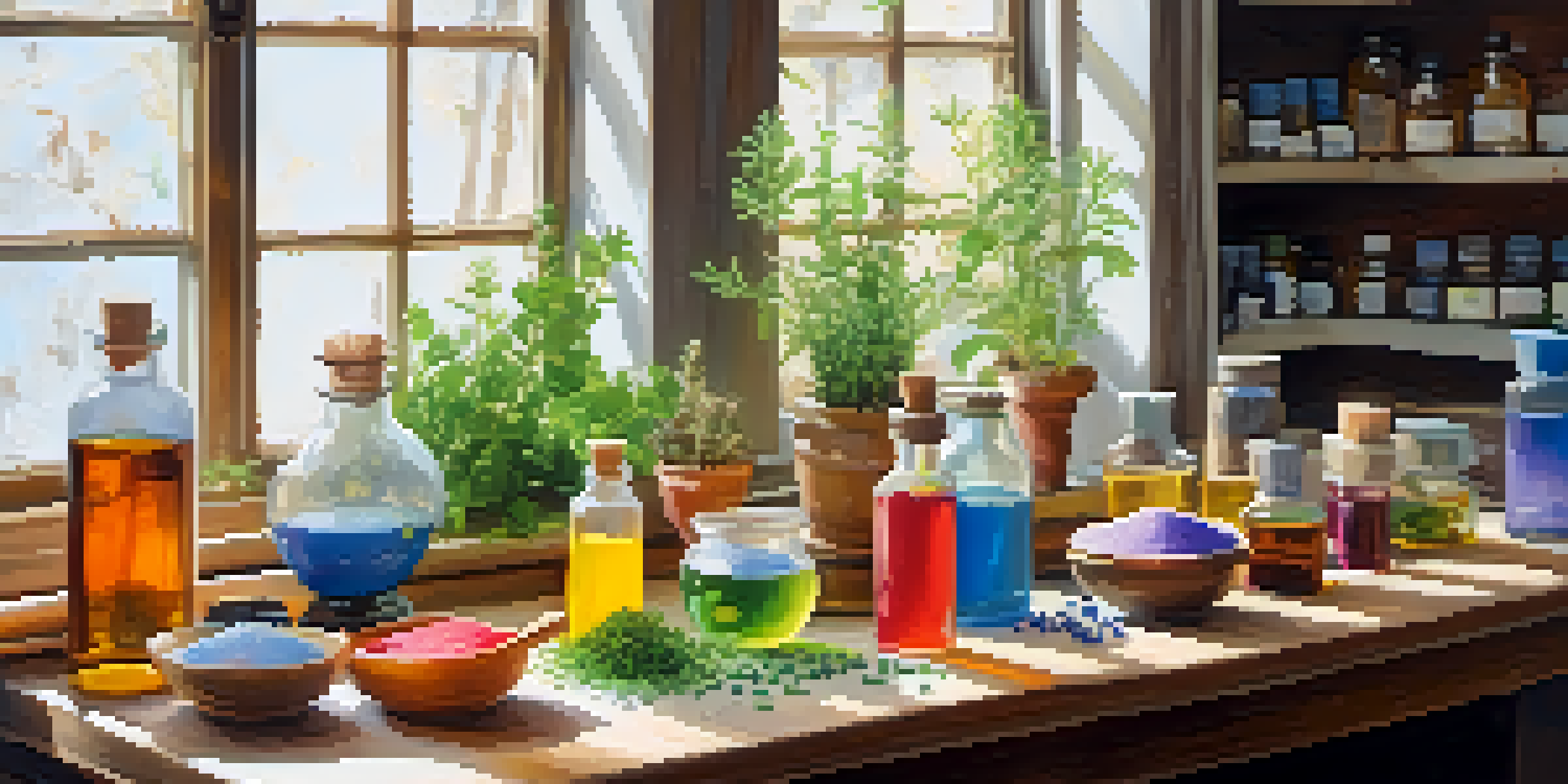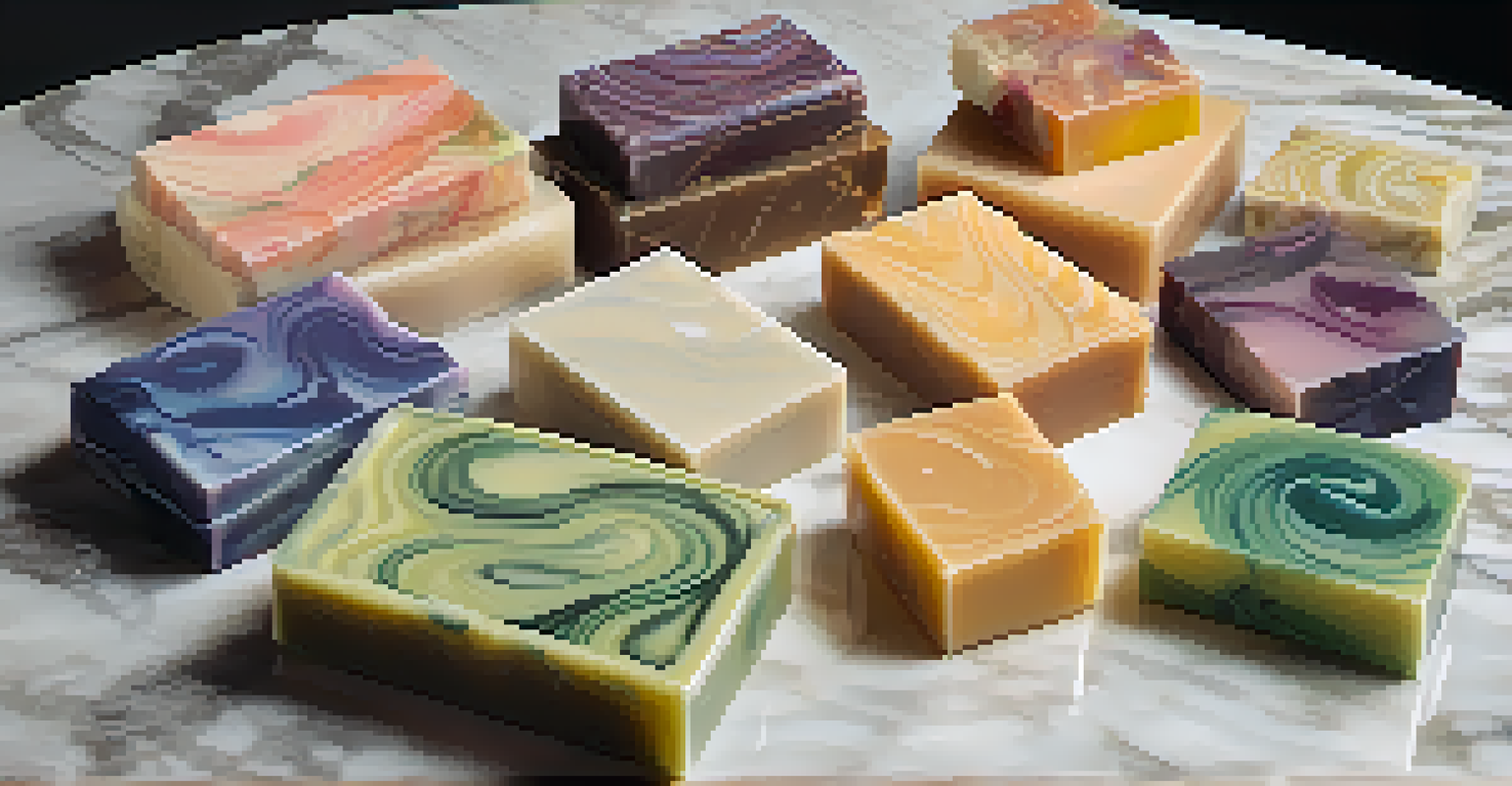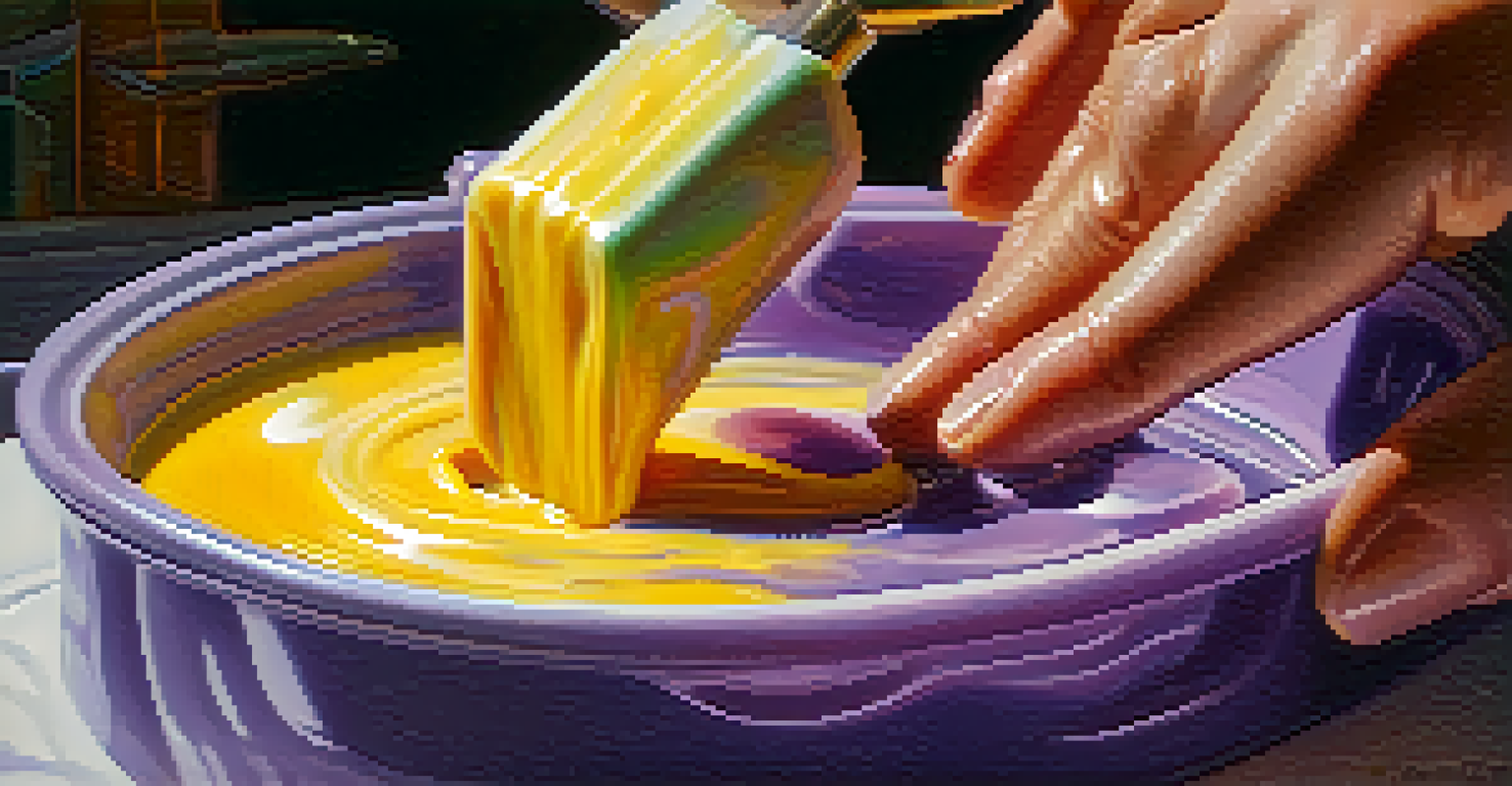Exploring Different Soap Making Methods for Unique Results

Understanding the Basics of Soap Making
Before diving into the various soap making methods, it's essential to grasp the basics. Soap making revolves around a simple chemical reaction called saponification, where fats and oils react with an alkaline solution, typically lye. This process transforms these ingredients into soap, resulting in a cleansing bar that’s gentle on the skin.
Soap making is not just a craft; it's an expression of creativity and a way to connect with nature's ingredients.
At its core, soap making can be both an art and a science. Whether you're looking to create luxurious, scented bars or simple, functional soap, understanding the foundational elements will help you innovate and experiment. Familiarizing yourself with the ingredients, tools, and safety precautions will make your soaping journey smoother and more enjoyable.
As you explore different methods, keep in mind that each technique offers unique benefits and results. From the ease of beginner-friendly methods to the intricate processes that allow for high customization, knowing the basics will guide you in choosing the right approach for your soap making adventure.
Cold Process Soap Making: A Classic Technique
Cold process soap making is a beloved method among enthusiasts for its versatility and creative potential. In this technique, oils and lye are mixed at room temperature, allowing for a slow saponification process that retains the natural properties of the ingredients. This method is perfect for those who want to incorporate various additives, like herbs or essential oils, for unique scents and textures.

One of the joys of cold process soap is the opportunity to customize every batch. You can experiment with colors, molds, and even layering techniques to achieve visually stunning results. Plus, as the soap cures over several weeks, it hardens and matures, resulting in a long-lasting bar that’s often praised for its quality.
Soap Making Basics Explained
Understanding saponification and the importance of ingredients and safety is essential for successful soap making.
However, it's essential to approach cold process soap making with care, particularly when handling lye. Proper safety precautions, such as wearing gloves and goggles, will ensure a safe and enjoyable experience, allowing you to focus on unleashing your creativity.
Hot Process Soap Making: Speedy and Satisfying
If you're looking for a faster approach, hot process soap making might be your perfect match. This technique involves heating the soap mixture, which speeds up the saponification process and allows you to use your soap sooner than the cold process method. It’s an excellent choice for those eager to see quick results without sacrificing quality.
The art of soap making is a beautiful blend of science and creativity, where your imagination is the only limit.
The hot process method not only saves time but also offers an opportunity to create unique textures and designs. Since the soap is poured while still warm, you can manipulate it to achieve swirls or even embed small decorations. This hands-on approach can be incredibly satisfying as you watch your creation come to life almost instantly.
However, keep in mind that the heat can affect some additives, so it's important to choose ingredients that can withstand this method. With some experimentation, you’ll find that hot process soap making can yield beautiful and functional results with a sense of immediacy.
Melt and Pour Soap Making: Ideal for Beginners
Melt and pour soap making is the perfect gateway for those just starting their soaping journey. This method involves purchasing pre-made soap bases that you can melt, customize, and pour into molds. It eliminates the need for handling lye, making it a safe and accessible option for beginners and kids alike.
One of the highlights of melt and pour is the ability to create stunning designs with minimal effort. You can add colors, fragrances, and even embed small toys or botanical elements for a personal touch. The immediate gratification of seeing your soap take shape in just a few hours makes it a fun and rewarding experience.
Explore Various Soap Techniques
Different methods like cold process, hot process, and melt and pour each offer unique benefits and creative opportunities.
Though it may seem less sophisticated than other methods, melt and pour soap making can be surprisingly versatile. With a bit of creativity and experimentation, you can create beautiful, unique bars that showcase your style and flair.
Rebatching Soap: A Creative Way to Revive Leftovers
Rebatching soap is a clever technique that allows you to breathe new life into leftover soap scraps. This method involves grating or chopping up existing soap, adding a bit of liquid, and heating it until it melts into a new batch. It’s an excellent way to reduce waste and make the most of your soaping materials.
By using the rebatching method, you can create a unique blend by combining different soap scraps, allowing for endless possibilities. This technique also gives you the chance to add new fragrances, colors, or even exfoliants, resulting in a completely transformed product. It’s a fun way to recycle while indulging your creative side.
However, it’s important to note that rebatching can yield a slightly different texture compared to fresh soap. This method works best for those who enjoy tinkering and experimenting with their soap creations, turning what might have been discarded into something special.
Advanced Techniques: Swirls, Layers, and More
Once you’ve mastered the basic soap making methods, it’s time to explore advanced techniques that can elevate your creations. Techniques like swirling colors, layering different soap batches, or even creating intricate designs can add a professional touch to your DIY soaps. These methods not only enhance the visual appeal but also allow for added functionality.
Swirls can be achieved through various pouring techniques, such as the spoon swirl or the drop swirl, adding a playful element to your bars. Layering, on the other hand, lets you combine scented or colored soap for a multi-dimensional look, giving your bars a unique character that reflects your personality.
Ingredients Matter for Quality Soap
Choosing high-quality oils and additives can significantly enhance the texture, scent, and benefits of your soap bars.
While these advanced techniques may require some practice, the results can be incredibly rewarding. As you gain confidence in your skills, you’ll find that these creative methods can set your soaps apart and make them truly one-of-a-kind.
Choosing the Right Ingredients for Unique Results
The ingredients you choose play a significant role in the final outcome of your soap. Opting for high-quality oils, butters, and additives can enhance the texture, scent, and overall performance of your soap bars. Natural ingredients like essential oils, herbs, and clays not only provide benefits for the skin but also add a unique character to each batch.
For instance, using coconut oil can create a bubbly lather, while olive oil contributes to a moisturizing bar. Adding botanicals like lavender or oatmeal can offer gentle exfoliation and soothing properties, making your soap not just beautiful but also beneficial for the skin.

As you experiment with different ingredients, keep in mind any skin sensitivities and the desired effects you want to achieve. The right combination can lead to unique results that make your soap making endeavors truly rewarding.